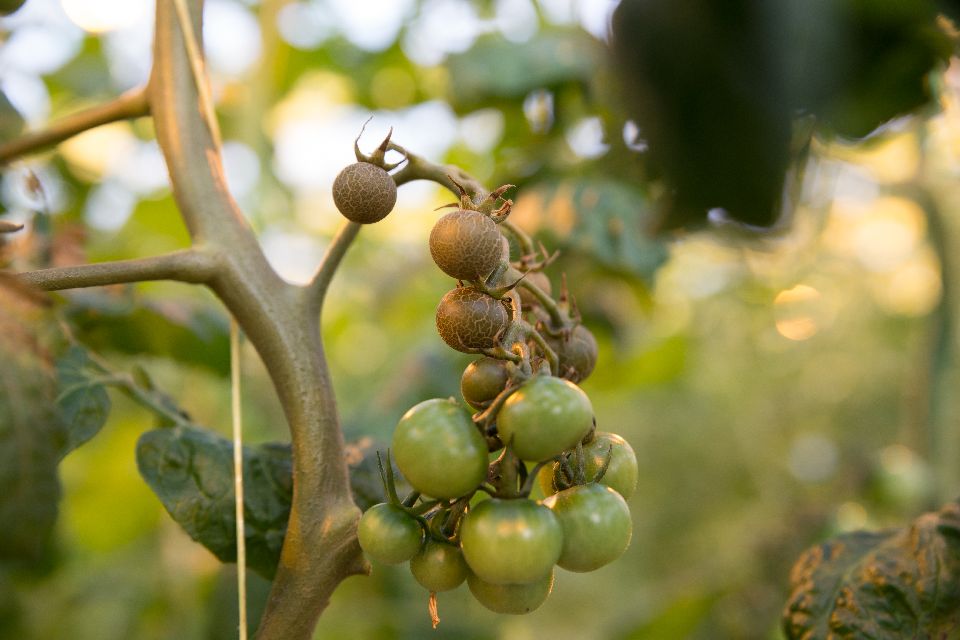Russet Mites Can Be Tough to Identify

Russeting is a trait that causes thousands of minute cracks in the fruit. In tomatoes, it’s devastating. Photo courtesy of Koppert Biological Systems.
Anybody who works for Extension is well versed in the process of diagnosing problems that a producer may have. These might include nutritional imbalances, pH, insect infestations, disease problems (fungal, bacterial, viral), or even environmental causes (too hot, too cold, too dry, too wet, too just about anything).
To confound the task of deciphering what happened in the past to cause what a grower sees in the present — the causal conditions — may no longer be present.
In addition, many problems have more than one cause concurrently, so the symptoms do not always look like the result of a single culprit.
That’s why experience really pays off. The longer a specialist or agent has worked in his or her field, the more real-life scenarios are stored away in that person’s mental database. So, many problems that were once mysterious, obscure, and time-consuming to figure out are now routine due to quicker recognition time.
This brings us to the point of this column. What are the hardest problems to diagnose in greenhouse vegetable production? There are a handful of such clinkers, but we’ll limit it to just one for this column.
Why Russet Mites Are Hard to ID
Russet mites (Aculops lycopersici) are arachnids, just like spiders, ticks, red bugs (chiggers), and other mites. This means they should have eight legs rather than the six-legged insects, since they are not insects, right? Wrong. Russet mites only have four legs.
Want more reasons why they are hard to diagnose? Here are three:
- They are not common. While two-spotted spider mites are much more common, I would call russet mite situations rare by comparison.
- They do not leave obvious evidence of their presence like spider mites. There is no webbing.
- They are very, very small, measuring 0.2 mm (that’s five hundredths of an inch). Most people with good eyes or over-priced glasses can see spider mites moving around in their webs. They may look like little dots, but you can see them.
If you use a magnifying glass, you can see the two spots on their backs. If you have webbing and two spots, you have nailed this one.
Do You Have Russet Mites?
So how would you even know if you had a russet mite problem?
The leaf symptoms are bronzing and curling, but the fruit symptoms will surely catch your eye.
Ruseting is a trait that causes thousands of minute cracks in the vegetable or fruit surface. When potatoes russet, such as the Russet Burbank variety, they are more valuable and sell for a higher price. Same thing for russetted pears, such as the Bosc group of varieties.
However, in tomatoes, russeting is devastating. The tiny cracks cause water loss, diminishing shelflife.
With russet mites, the whole fruit has the minute cracking, turning it brown. The tomato resembles 200-grit sandpaper in color and coarseness and is not marketable. Russet mites will kill your plants if unchecked.
Complicating this problem even more is that due to the difficulty in diagnosing the problem, growers often don’t realize they have an issue until they have sustained several weeks of gradually increasing damage. Less seasoned Extension personnel may not know the symptoms on the spot, so more delay can occur. Symptoms are often mistaken for nutritional or disease problems.
Once diagnosed properly, there are chemical controls that can be implemented, but the sooner the better. Sulfur may help, but consider using miticides such as chlorfenapyr or fenproximate.










